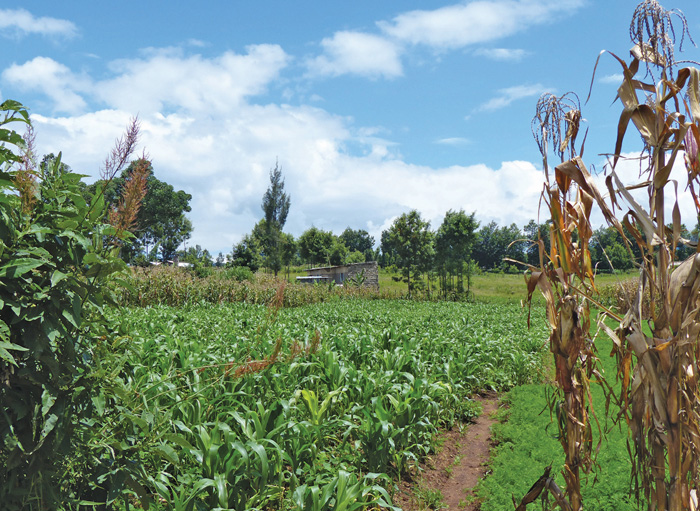Public-private partnerships grab headlines and stir up controversy when governments team up with the private sector on everything from highways to hospitals.
Many rural communities are familiar with a different funding structure: public-public partnerships. These agreements ask local residents to kick in a good chunk, if not all, of the funding for public infrastructure.
In my own community, I need only look out my office window for a recent example. Volunteer labour and local money built the new Livelong post office this summer. And just 15 minutes to the west, in Turtleford, a modern hospital stands as further testament to our get ‘er done attitude.
Read Also

Claas brings 1000 Series SP forage harvesters to Canada
In mid-August, Claas unveiled its new line of Jaguar forage harvesters at an event in Visalia, California, deep in the heart of that state’s dairy region.
About 15 years ago, it was clear a new hospital was needed. At that time, the price tag on a new building was $6.2 million, Marion Nordell tells me.
Nordell was on the hospital board at the time. She says the new hospital was a joint effort between the community and government. “And the community was fortunate that the previous hospital board had the foresight to build up a fund for replacement.”
The provincial government kicked in 65 per cent, leaving the rest to surrounding communities Ryan Domotor, RM of Mervin administrator, tells me. Domotor says the RM of Mervin raised over $340,000 through taxation. The town of Turtleford and neighbouring municipalities also contributed. Add that to the hospital board savings, some private donations and government funding, and the hospital was built.
But people around here are not unique in their willingness to invest in their communities. Communities know what services they need and, with a little help, they can often find a way to get things done.
“Doing a lot with very little”
Stand in a Kenyan grain field, and you’ll notice it looks a lot like a Canadian field, says Tamara Leigh, a communications specialist and freelance writer from Vancouver Island (and, full disclosure, a friend of mine). Seen from a hilltop, the patchwork of fields might remind you of Prairie farmland viewed from a plane. But look around the farmstead, and you’ll notice the lack of machinery and grain bins, things we take for granted in Canada.
“My impression was that they are doing a lot with very little,” Leigh says.
Leigh joined a farm media tour in Kenya in 2012. She met up with Booker Owuor, president of the Kenya Small Scale Cereal Growers Association, to learn about grain production in the country.
The Small Scale Cereal Growers Association counts 30,000 farmers as members. And although they all farm five acres or less, Leigh says they grow most of Kenya’s cereals. Maize is the staple, but farmers also grow wheat, sorghum, barley, millet, rice and legumes.
Each year Kenya loses between 30 and 40 per cent of its crop to poor post-harvest handling, storage, and infrastructure issues. Some issues extend beyond the farmgate. For example, Leigh says with a bit of rain, the roads “can be absolutely impassable.”
But some post-harvest problems can be solved on-farm by teaching farmers everything from how to shell maize properly to how to build their own storage facilities.
“It’s very, very specific. And some of it is very basic,” says Leigh. “And that was very much my experience of agriculture in Kenya, was there are some really basic agronomic practices that can be improved at the farm level before you need to look at bringing in technology or layering on other, more complex solutions.”
The Kenya Small Scale Cereal Growers Association has trained farmers to teach others how to cut their post-harvest losses. “What they’re looking for funding to do is to get their trainers out to the community and bring all of these small scale farmers together to do these trainings. To do farm visits and look at property storage facilities and do that learning,” says Leigh.
Leigh says the Kenyan government doesn’t typically fund these types of agricultural projects. Kenyan farmers are turning to a broader community for help — in this case, other farmers.
Leigh says $50,000 would cover the project costs. She’s hoping to raise at least $10,000 through online donations at fundrazr.com. All proceeds go directly to the Kenya Small Scale Cereal Growers Association.
“They’re registered with the Kenyan government,” Leigh says of the association. “They have a long history of working with Kenyan farmers. They’re a group that I worked with when I was there. They have legitimacy behind them and they have a proper governance structure.”
Asked what makes this project different from other failed development projects undertaken by foreign aid agencies, Leigh says the essential difference is “this is an issue and a solution that’s been identified by Kenyan farmers.”
This project is a real “soil-up kind of movement,” says Leigh, unlike many aid organizations “that go in and say: ‘We’re going to identify your issues and tell you how to solve them.’ This is a real farmer-driven movement.”
Technology progresses; the world shrinks
It seems to me that technology is making the world seem smaller and smaller. Twitter is like a small town, except geography isn’t a barrier. Facebook felt the same way when I had an account.
Fundraising websites such as Fundrazr.com make it easier to support whatever causes are close to your heart. Those projects can be set anywhere in the world, and include everything from people’s health care bills to legal expenses for WikiLeaks staff. Other websites, such as Kiva.org, allow people to loan as little as $25 to any business owner they deem worthy.
The beauty of a site like Fundrazr is that anyone can start fundraising. Want to raise money for a new curling rink in your town? Set up a Fundrazr page, send the link to potential supporters, and you can accept donations through PayPal or credit card.
The potential problem with sites like Fundrazr is also that anyone can set up an account, including fraudsters. People can report scams to the site’s administrators. But they don’t pre-screen fundraising campaigns, so there’s nothing to stop someone from ripping off people before they’re caught.
Kiva seems more diligent. Their field partners screen borrowers, looking at loan history, loan purpose, and other factors. But there is always a risk of defaulting.
I write this not to discourage you from donating or lending, but to warn you to do a little research. Personally, I’ve thrown a few bucks towards the Kenya post-harvest project, along with an independent media project suggested by a friend, through another crowd-funding site. I think the good done will outweigh the bad, but be careful. Consumer Protection B.C. has several articles on avoiding fraud on its website.
Thanks to these sites we can monitor a small business owner’s progress as they pay back those micro-loans. We can learn about the plights and challenges faced by people from all over the world more easily than ever before. And we can tell others exactly what we need in our own communities.
For more on the Kenya Small Scale Cereal Growers Association project, visit www.fundrazr.com and search “Food Secure Kenya.” If you’re interested in micro-finance, check out www.kiva.org.
















